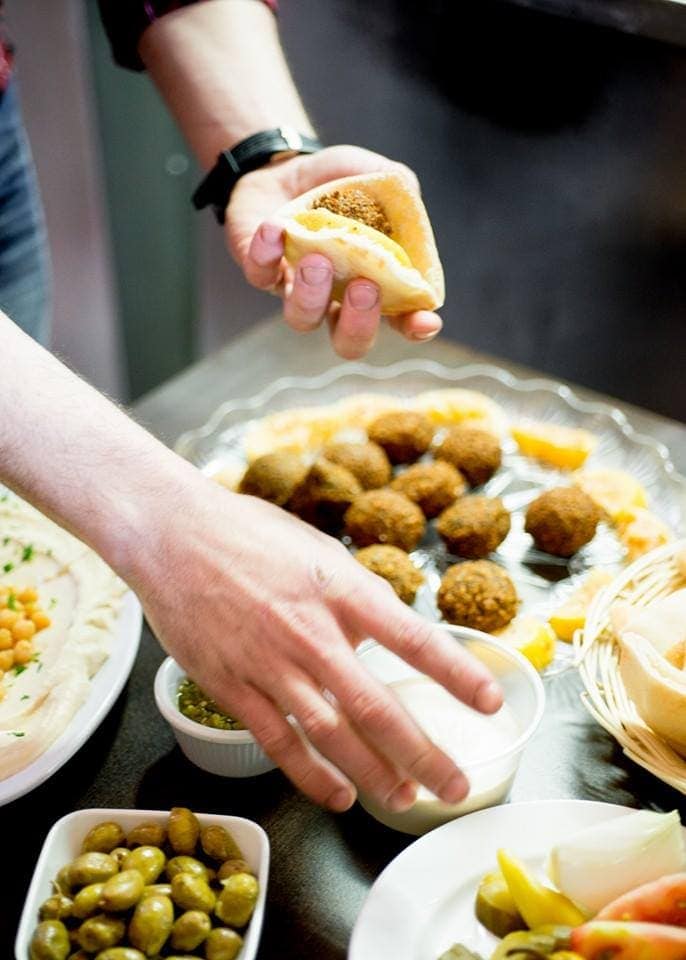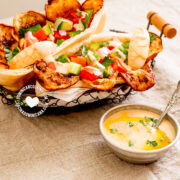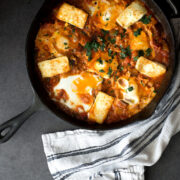A Dominican in Israel: My culinary tour of Israel, and why some of its cuisine seemed familiar to me.
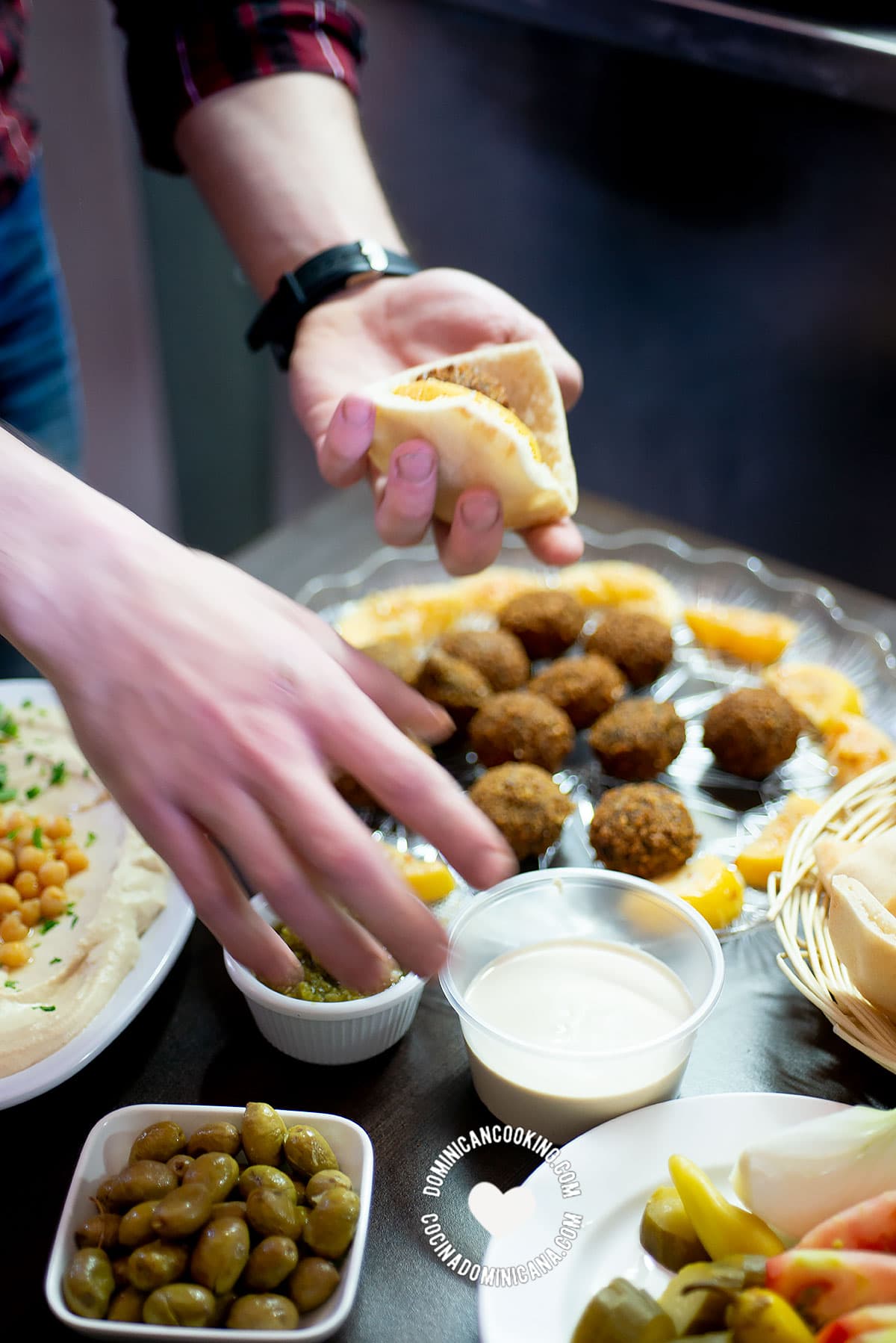
A few weeks ago I received a message with an invitation that I almost turned down due to prior family commitments. It would have been with a heavy heart, though, as this was truly a once-in-a-lifetime opportunity. Luckily, both my husband and Ilana persuaded me to change my mind, so I embarked on a trip to learn about the food and people of one of the world's most iconic countries: Israel.
A 13-hour trip landed me in a very unfamiliar territory. Accustomed as I am to traveling to places where I can't speak the language, here I couldn't even recognize the alphabet. Fortunately, nearly all the Israelis I met spoke English (and a few also spoke Spanish). After being welcomed by a sweet older lady from the VIP service hired by the organization that brought me to Israel, I breezed through the dreaded Israeli airport security process. My friendly and talkative taxi driver was waiting outside to give me a first impression of the Israeli people in their natural habitat. This quickly put one of a few misconceptions I held about Israel to rest.

Unlike most Dominicans, I was not unfamiliar with Israel, its people, and history. I had met a few Israelis, some were my coworkers and clients a long time ago. Aunt Ilana herself grew up in Israel and had given me as broad a view of Israel's people and culture as one could possibly get from over 6,000 miles (10,000 km) away. One thing they all mentioned was the Israelis' famous -- or perhaps infamous -- straightforwardness. I prepared myself for the shock, after all, this would contrast with my own culture, in which we bend over backward not to tell people uncomfortable truths. I should have known better, do not judge a people until you meet them in their home ground. While there is truth to the Israeli reputation for directness, I am guessing they know how to tone it down for us clueless foreigners.
Though I flew to Tel Aviv -- the unofficial capital of Israel -- we drove to Jerusalem for a meeting with my hosts and the four other Hispanic bloggers who would be accompanying me on this tour: Heidi Leon, Txaber Allue, Bren Herrera and Layla Pujol.
Vibe Israel, an unaffiliated non-profit, has been inviting some of the most influential bloggers from around the world to Israel (all my expenses were covered) to experience first-hand what this young country has to offer. I came to learn about the local cuisine and vibrant culinary scene. After the introductions were over, we went for a stroll, and for my first taste of Israel at Chef Avi Levy's Beit Hakavan and its Algerian-influenced cuisine. It did not disappoint.
Contentious history aside, Jerusalem offers food from the diverse cultures present in the city, many familiar tastes, and some very new to me. The (predominantly vegetable-based) food was flavorful, seasonal, unpretentious and very well presented. Jet-lagged and exhausted as we were, we devoured that first dinner like food was running out. But there was more to come, oh boy, would there be!
After a restful night's sleep and breakfast at the Mishkenot Sha'ananim Guest House -- a historical site with a magnificent view of the Old City walls and impressive list of distinguished former guests -- we went for a walk of the Old City of Jerusalem, which was as moving as you can imagine. We then headed to the Mahane Yehuda Market, a tour that put us in contact with Halva (a sweet sesame paste) and Bourekas (local turnovers), foods that we would encounter many times throughout Israel. The Market is a food lover's paradise, both clean and chaotic, mesmerizing to all the senses. I could have easily spent a whole day there. As luck would have it, there was much more to come: A fun cooking demo at Chef Tali Friedman's Atelier, and later the punchy duo of amazing dinner and loud music at the very trendy and very popular Machneyuda Restaurant with the very dynamic Chef Uri Navon. You can see more of our Israeli Adventure seen through the lens of the talented food photographer (and my new BFF) Haim Yosef.

If I called Mejadra a "Middle Eastern" and not a "traditional Israeli" dish, it was for a good reason: there is no such thing as "traditional Israeli cuisine". If you are sufficiently shocked -- I know I was! -- let me now clarify that statement. Israel is very young; many Israelis alive today were there for the foundation of their own country, and they came from all over the world: Eastern Europe to Latin America, Ethiopia to India -- and everywhere in between. Some Israelis are ethnically Jewish (though not necessarily religious), some are Christians and some are Muslims (though, again, not necessarily religious). This is, to use my Huge Understatement of the Day, a complex nation.
You can now imagine the gastronomical Tower of Babel that is Israeli cuisine. And that is its strength. Step from one market stall to another and it's like going from one time zone to another, culinarily speaking.
On our third day in Israel, we hit the road. I was a bit disappointed that we didn't see more of Jerusalem, as we mostly stuck to the ancient part of the city, the touristy part; and like many an ancient city crowded with tourists, it had that faint amusement park-like atmosphere that I find slightly off-putting. Stepping into the van I got ready for a new adventure. Is there a better way to see a country than to hit the road?
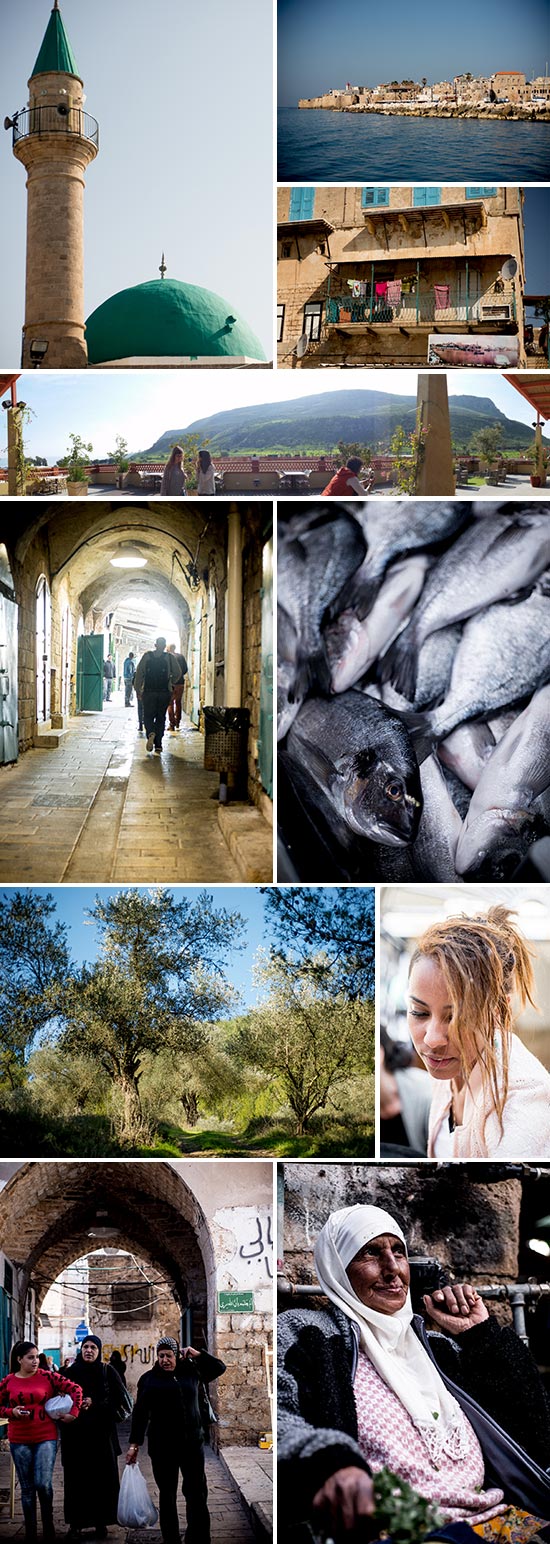
We headed for the city of Akko (Acre), a couple of hours' drive from Jerusalem, just to the north of Haifa. Known during the crusades as St. John d'Acre, Akko is one of the longest inhabited spots on the planet, going back to the Bronze Age. Arriving into the port and old market you can see seemingly random layers of the many ages of this city piled up one on top of another, giving it an unfinished look that I surprisingly found very photogenic. It must be my love for textures, and they abound in a corner of the world where ancient stone houses support satellite antennas, and peeling walls make the perfect background for photography.
Sadly, we did not get to see much of the actual city of Akko, where Muslims, Arab Christians, Jews (and even Baha'i) live, each adding their own dishes and foods to the city's gastronomical landscape. Yet another place that I'd love to revisit with more time.
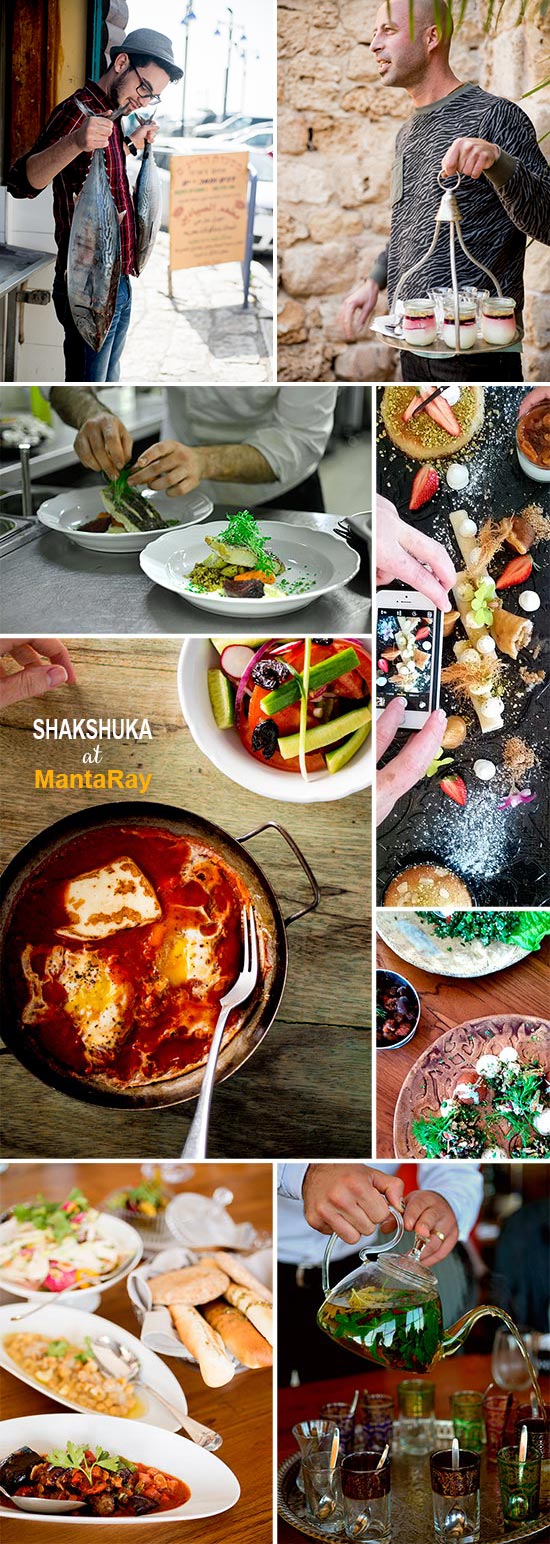
A few minutes later we met native son Osama Dalal, an up-and-coming chef on the Israeli culinary scene, and with him, we embarked on a tour of the city, its market, its history, and its food. Ah, yes, and a boat trip too. We had our first taste of the city right there by the sea. The rice rolls wrapped in cabbage looked vaguely familiar and tasted a lot like our niños envueltos. At the end of the tour of the Turkish market, where we did get to try many a local delicacy and were treated to an impromptu cooking demo by the ever-entertaining Osama, we headed for his stall in the market to try his food, a food which is as steeped in tradition as the city itself, and inspired by his family recipes going back centuries.
I'd be remiss if I didn't mention that in one of those little market stalls I had the best falafel I've ever tried. Those "golden balls", and Osama's lessons on hummus etiquette were probably worth the trip to Israel.
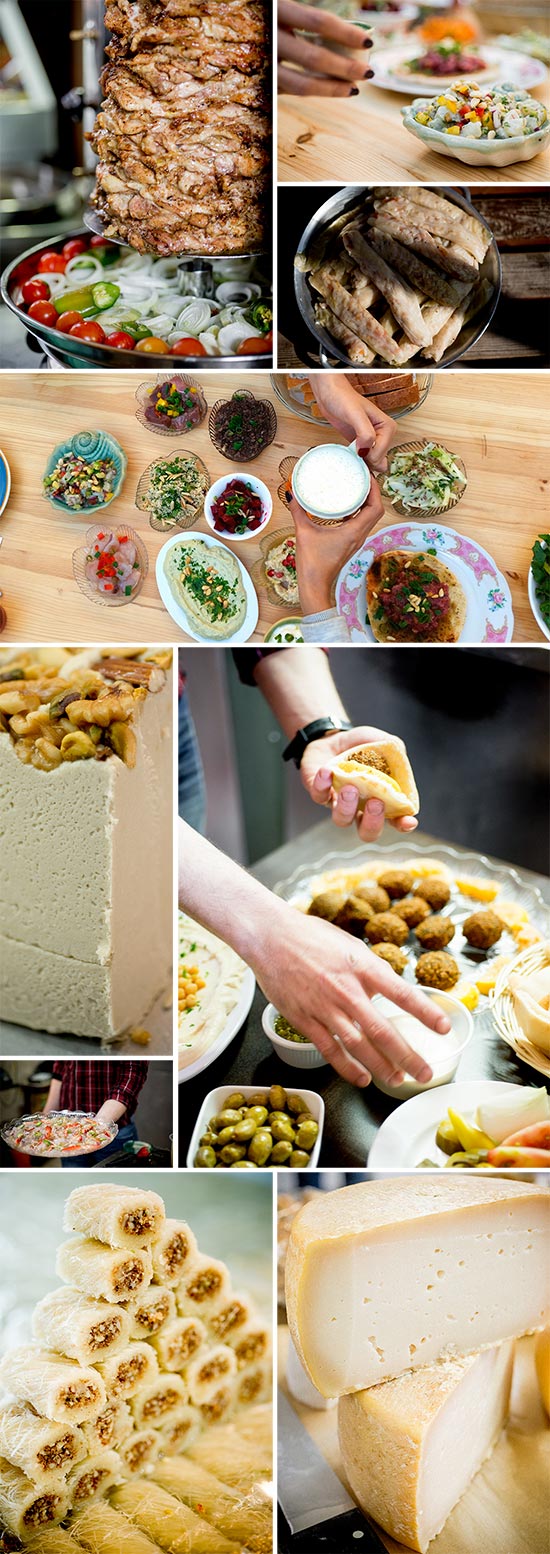
The short visit to Akko ended to head to Mitzpe Hayamim, an interesting concept hotel and spa that produces most of what it consumes right there on the premises, from cheese to soap to organic vegetables. Perched atop a mountain with million-dollar views, it has immense bedrooms and served the best breakfast we had in Israel. Later that night we ended the day with dinner at Muscat Restaurant with Chef Roy Dekel.
Next morning we were on the road again, this time for a trip to the Biriya Forest with Dr. Uri Meir Chizik, and for a very unique tasting: we were going to forage for edible plants. I left with muddy shoes, pricked by thorny bushes, and more than fascinated with the subject. Luckily we had worked enough of an appetite walking through the forest to thoroughly enjoy one of the most memorable dinners of our visit: Magdalena, a restaurant with some seriously impressive vistas, between the mountains and the shore of Galilee.
There was something vaguely reminiscent of our home cooking in the Arab food cooked up by Chef Zuzu; amidst a sea of dishes, we found kibbeh and tabbouleh -- which we know as kipe and tipili. It was their mejadra that inspired me to try and write a recipe for it.
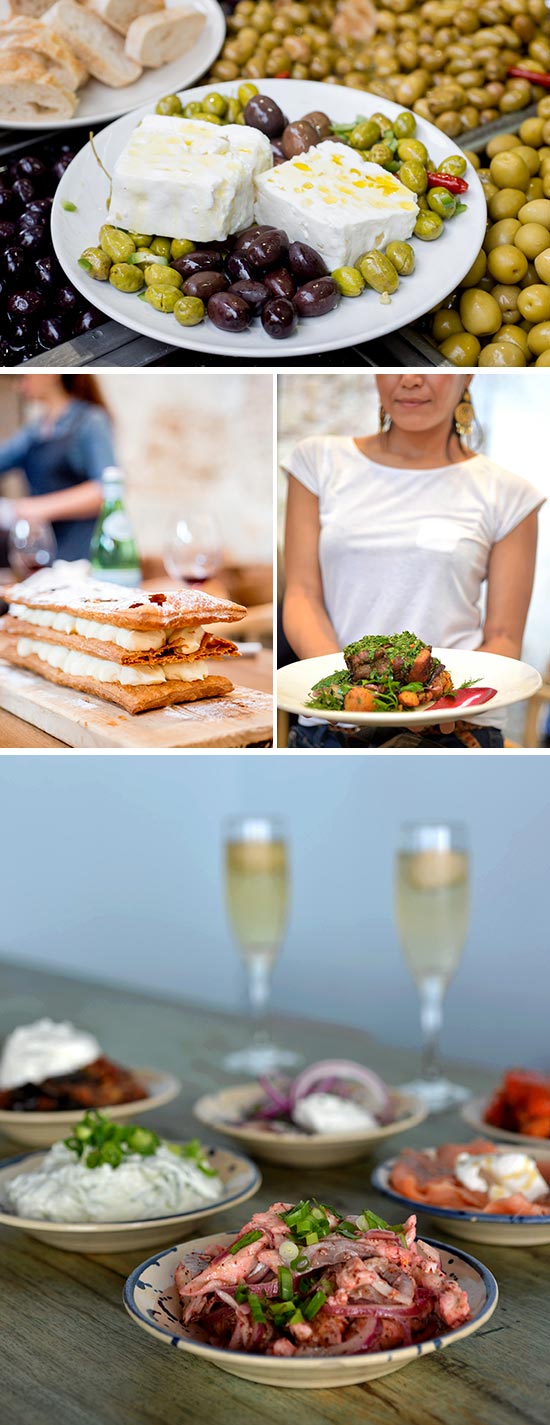
If you've followed my culinary adventure in Israel this far, this is the part that ended somewhere around the time a snowstorm caused all the airports in the US East Coast to be shut, and my flight home canceled. I wasn't a happy gal, giving my nine-year-old the news that mommy might take some more time to get home almost made me want to cry. It was my luck that my friend Bren was also staying longer in Israel, so we decided to go out and explore Tel Aviv on our own.
A day with Bren is an adventure in itself. That and how we came home with several pair of shoes, including some amazing handmade ones, is a story for another day!
We spent most of the tour in Tel Aviv, a city that had many surprises reserved for me. I frankly had very little idea of what it would look like, aside from the fact that I knew it was a very cosmopolitan city. That part was indeed true.
Tel Aviv is a city of contrasts: buildings in serious need for some TLC right next to architectural treasures. A bike-friendly city with rental bikes available to anyone, and drivers who are a little too impatient, and where the sound of horns is the "national anthem" (or so I was told). Mind you, it's still light years ahead of our own hellish traffic, but it was a bit of a surprise for me.
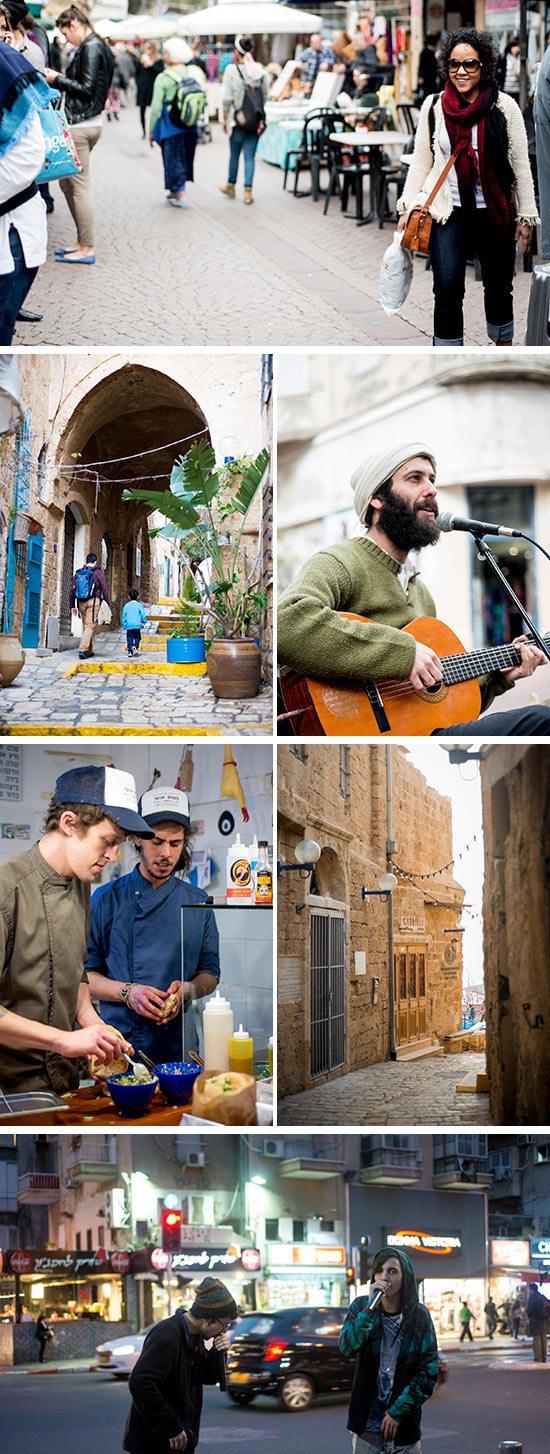
Amazingly, I loved the city, warts and all. All around there was a sense of exuberant youth to it that just clicked with my own cultural DNA.
I have to be honest with you, at this point I was so exhausted that I don't remember everything that happened in Tel Aviv, but this much I remember: the food was memorable.
We made it to the city on Friday, on the eve of the Sabbath, and we had been invited by Itamar Davidov, a well-known Israeli Chef, to a non-traditional Sabbath eve dinner. Our gracious hosts opened the doors of their beautiful home to us and treated us to a very unorthodox (pun intended) array of dishes that mixed Jewish with Mexican traditions.
The following day we left our home in the city, the very artsy Hotel Diaghilev, for lunch at Claro, a restaurant in a most unusual location. Imagine that, spectacular cuisine served in the former headquarters of the Mossad.
Dinner at North Abraxas Restaurant turned from "I'll hate myself in the morning but I just can't pass on this, or that" to a 30-minute discussion on green beans and garlic. Which is what happens when you travel with food bloggers. And then a whirlwind tour of the bar scene with fancy drinks, trendy digs, and crowded watering holes of which I remember little, despite the fact that I was stone-cold sober at the end of it.
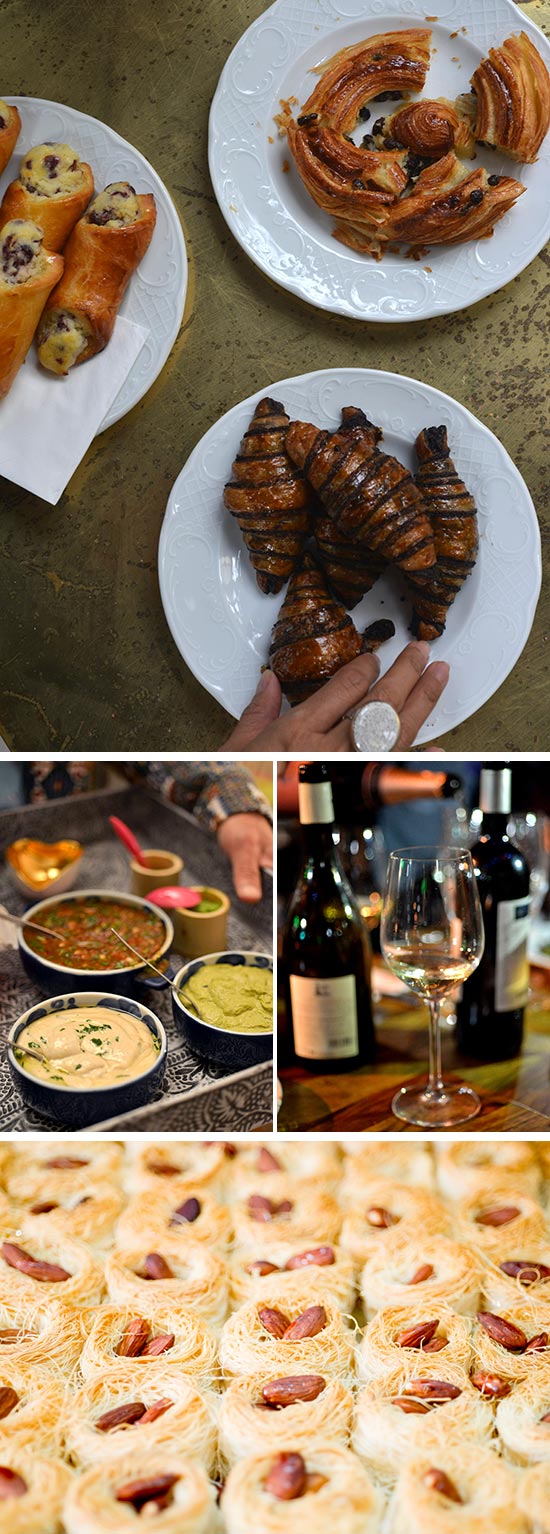
After a tour of the "Shuk Levinsky" Market with culinary journalist and television personality Chef Gil Hovav -- who Aunt Ilana may or may not have met in a previous life -- I met the incredibly gracious Michal Marom, a local food blogger and mother of two, who invited me to her home and treated me to something I had never tried before: Polish-Jewish food. Up to that point I thought that "chopped liver" was just an expression. I loved everything, especially cooking with her, her honest answers to my machine gun-like questioning, and the trip to her neighborhood supermarket. Now I have to teach her how to make mangú.
What was supposed to be my last day in Israel started with a morning visit to Dallal Bakery in one of the more upscale and old parts of the city, and a tour of the kitchen with Pastry Chef Aner, which ended with a tasting of the sinfully-good pastries from their kitchen.
Lucky we did go around walking, because no sooner had we polished off our breakfast we were heading for lunch at MantaRay Restaurant for a Mediterranean-inspired lunch by the beach. This is where I tried the great Shakshuka with halloumi that inspired the recipe I shared with you two weeks ago.
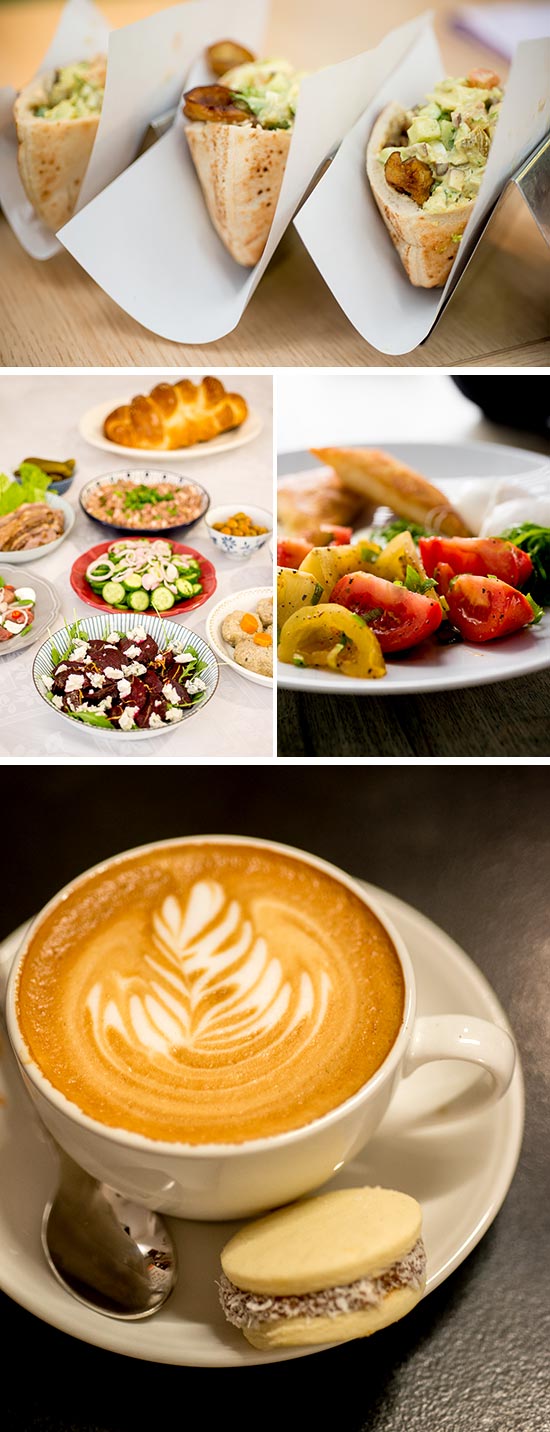
Later that night we met for a cocktail and to meet and say goodbye to all the people who had made the trip a memorable one. I was supposed to fly home that night, alas, it wasn't to be, but you've already heard about that.
So there I was, aggravated with no one in particular (the weather gods, perhaps?).
We walked around aimlessly and just found ourselves in a large craft fair that takes place, as luck would have it, twice a week on that very same day. This turned out to be the most expensive part of my trip. I can not stress this enough, but if you find yourself in Tel Aviv, do not miss the Nachlat Binyamin arts and crafts fair, it's the perfect place to go home with some beautiful handmade gifts.
And while you're there, try the freshly-made orange and pomegranate juice.
Inbal, whom we met for dinner, knew just the place to try Sabich, the most quintessential Israeli dish: The Happiness Joint, where two surfer dude-looking young men seemed very suspicious of my camera and questions. Luckily they relaxed once I told them why I was in Israel, and they felt at ease about sharing that the amazing drink that they serve as "Happiness Juice" was mostly based on ginger and pineapple, no psychoactive substances whatsoever. I have to say I felt ever so slightly disappointed that wasn't the case.

Also read:


